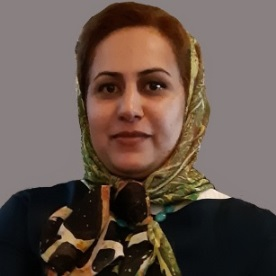Construction and Built Environment Education in A Digital Context
A special issue of Education Sciences (ISSN 2227-7102).
Deadline for manuscript submissions: closed (30 November 2022) | Viewed by 9760
Special Issue Editors
Interests: sensing technologies; AI; machine learning; advanced GIS; BIM; digital twins; city analytics methods; digital construction; smart cities; smart construction
Special Issues, Collections and Topics in MDPI journals
Interests: sustainability; energy efficiency; artificial intelligence; smart city; digital twin; applications of the internet of things; advanced GIS; LiDAR; BIM; digital technology in infrastructure; mixed reality applications; information and communication technology; spatial analysis and visualization; authentic education
Special Issues, Collections and Topics in MDPI journals
Special Issue Information
Dear Colleagues,
Partnership for 21st Century Learning (P21) suggested four skills for people, including creativity, critical thinking, communication, and collaboration. Technological and educational changes have the potential to improve these skills and promote more entrepreneurial thinking and experiential and lifelong learning. For example, mixed reality (virtual and augmented) has the potential to significantly enhance collaboration, communication, and teamwork among BECE students and their instructors, their motivation, and knowledge construction. Digital technologies are perceived to be beneficial in some disciplines since they offer immersion into learning, allow personalising the learning environment, and train both knowledge and physical skills of the learners. However, many challenges need further investigation such as financial restraints, hardware or software complexity, physical limitations and health issues. Another challenge is the effective use of these technologies to enhance student collaboration occurring on learning projects between individuals, small groups or larger groups in both distance learning and classroom-based teaching. In order to allow students to learn anywhere and anytime, the application of digital technology is a must. Digital education technology needs to be incorporated in the future of BECE education to ensure students can enhance their skills to cope with a building project dependent on new technology.
This Special Issue concerns teaching and learning topics in the field of built environment and civil engineering (BECE) disciplines, including construction and property management, urban planning, architecture, structural design, civil and environmental engineering, remote sensing, material science, and other relevant files. Another concern is to address how digital technology enables remote, self-managed and self-paced learning based on a learner’s preferences and to identify barriers and challenges in specific theoretical, computational or practical subjects in the BECE disciplines.
This Special Issue also intends to collect relevant works in two main directions: (a) the implementation of digital technologies such as mixed reality and online platforms in education; (b) technology education such as BIM and GIS training. The first direction investigates how various strategies, such as blended learning, including four submodels—Station Rotation, Lab Rotation, Flipped Classroom, and Individual Rotation—can enhance teaching and learning experiences. The second direction addresses the challenges of teaching new information technologies that should be used in practice, such as BIM, GIS, 3ds Max, Rhino 3D modeler, Primavera, and so forth.
In this Special Issue, we are mainly interested in case studies that involve real-world problems and projects, a critical and systematic review of the literature, experimentational, analytical, theoretical exploratory studies, forums, and discussions. They may cover any of the following topics in the context of BECE, as well as any other relevant topics not included in the list:
- Digital education pedagogies: state of the art
- Mixed reality (virtual and augmented) applications in education
- Innovative curriculum development for the digital age,
- The impact of digital technology on academic achievement
- Effective use of digital technologies to enhance student performance and engagement
- Digital assessments models
- Massive open online courses (MOOC)
- Blended learning models and applications
- Diagnostic assessment including diagnostic, formative, summative, norm-referenced, and criterion-reference assessments
- Authentic education and leadership
- Continuing and online professional development strategies
- Diversity and inclusion
- Experiential and lifelong learning of practitioners
- Governance of learning and teaching
- Teaching and learning using evidence-based practices
- Technology education literacy and practice (e.g., BIM and GIS)
- Key ideas–thinking skills–values–habits of mind
- Future of laboratory
- Novel teaching methods in a digital age
- Green and sustainable education
- Fostering connectedness, collaboration, and co-creation
References
- Sepasgozar, S.M., 2020. Digital Twin and Web-Based Virtual Gaming Technologies for Online Education: A Case of Construction Management and Engineering. Applied Sciences, 10(13), p.4678.
- Ruge, G., Tokede, O. and Tivendale, L., 2019. Implementing constructive alignment in higher education–cross-institutional perspectives from Australia. Higher Education Research & Development, 38(4), pp.833-848.
- Ruge, G. and McCormack, C., 2017. Building and construction students’ skills development for employability–reframing assessment for learning in discipline-specific contexts. Architectural Engineering and Design Management, 13(5), pp.365-383.
- Shirowzhan, S., Kimmel, L., Mojtahedi, M., Sepasgozar, S. and Peacock, J., 2020. A GIS-Based Risk and Safety Analysis of Entrance Areas in Educational Buildings Based on Students’ Experience. In Smart Cities and Construction Technologies. IntechOpen.
- Shirowzhan, S., Lim, S., Trinder, J., Li, H. and Sepasgozar, S.M., 2020. Data mining for recognition of spatial distribution patterns of building heights using airborne lidar data. Advanced Engineering Informatics, 43, p.101033.
- Shirowzhan, S., Tan, W. and Sepasgozar, S.M., 2020. Digital Twin and CyberGIS for Improving Connectivity and Measuring the Impact of Infrastructure Construction Planning in Smart Cities.
Dr. Sara Shirowzhan
Dr. Samad Sepasgozar
Guest Editors
Manuscript Submission Information
Manuscripts should be submitted online at www.mdpi.com by registering and logging in to this website. Once you are registered, click here to go to the submission form. Manuscripts can be submitted until the deadline. All submissions that pass pre-check are peer-reviewed. Accepted papers will be published continuously in the journal (as soon as accepted) and will be listed together on the special issue website. Research articles, review articles as well as short communications are invited. For planned papers, a title and short abstract (about 100 words) can be sent to the Editorial Office for announcement on this website.
Submitted manuscripts should not have been published previously, nor be under consideration for publication elsewhere (except conference proceedings papers). All manuscripts are thoroughly refereed through a double-blind peer-review process. A guide for authors and other relevant information for submission of manuscripts is available on the Instructions for Authors page. Education Sciences is an international peer-reviewed open access monthly journal published by MDPI.
Please visit the Instructions for Authors page before submitting a manuscript. The Article Processing Charge (APC) for publication in this open access journal is 1800 CHF (Swiss Francs). Submitted papers should be well formatted and use good English. Authors may use MDPI's English editing service prior to publication or during author revisions.
Keywords
- Mixed reality (virtual and augmented reality)
- Digital tools
- Geographical information systems (GIS) education
- Building information modeling (BIM) education
- E-learning
- Blended learning
- Built environment
- Civil engineering
- Construction management
- Property management






